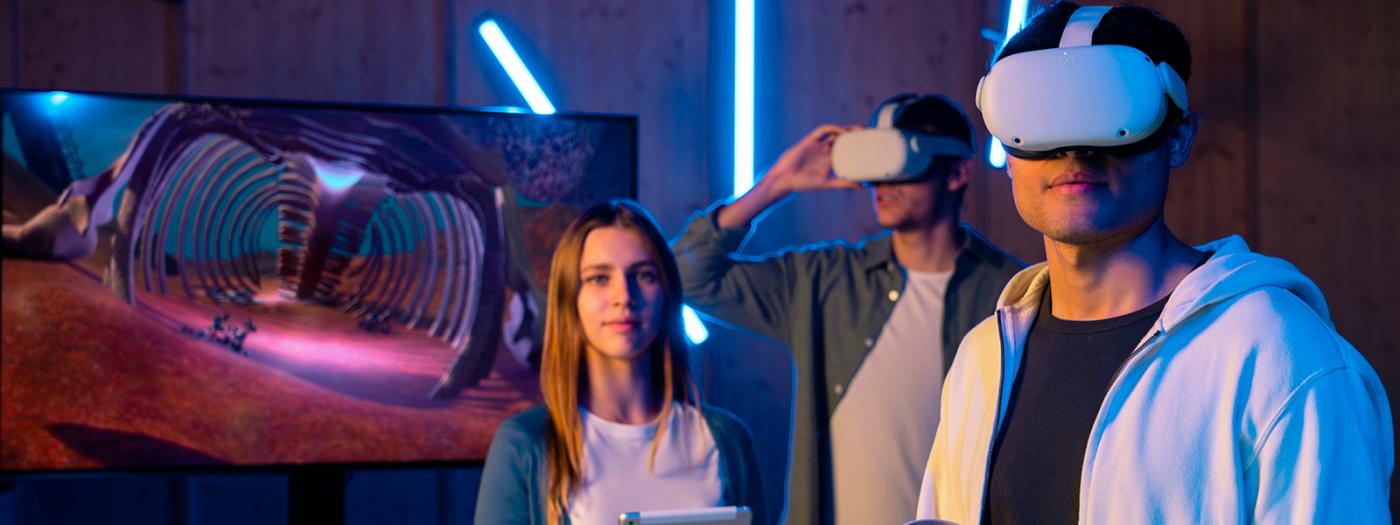In today's world, digital technologies influence our life as never before, the surrounding electronics has an increasingly
bigger impact on the different aspects of our life. The understanding of this new reality goes through a paradigm
change where electronic devices are no longer black boxes that hide their operation, but tools that allow us to
understand and change our environment according to our needs.
Likewise, the flow and the amount of data describing our environment and ourselves increases in an accelerated way.
The data generated, either by sensors or by interactions between the actors of these systems (including humans) is
accumulated and enables autonomous decision-making. The ability to understand and manage tools for the
management, processing and collection of data is a central part in the development of new systems.
The limit between hardware and software is increasingly blurred, the ability to prototype simultaneously in both areas
allows us to design systems that best adapt to our needs. The use of open prototyping tools such as Arduino and
Raspberry Pi facilitates this development to profiles with a more general vision of current needs and problems.
The objective of this class is that the student is able to prototype systems focused on the resolution of a real problem
using hardware and software resources. At the end of the course the student must present an interactive project that
includes at least:
? Use of sensor(s) as inputs.
? Data management and processing.
? Remote control through a user interface (mobile application, web interface)
? Use of actuator(s) as outputs
The proposed concept must be developed in response to a real problem and the presented devices must be a student
own design, capable of demonstrating its functionalities through circuits and code developed by the students.
Titular Professors
Know how to work in a team.
? Being able to generate new ideas.
? Make use of a methodology for the evaluation of solutions to a problem.
? Ability to analyze systems and divide them into different problems.
? Develop projects iteratively.
? Have the ability to design circuits that include sensors and actuators.
? Be able to investigate autonomously and find practical solutions to technical problems.
? Understand low-level communication protocols.
? Know tools for circuit prototyping.
? Be able to find and solve problems in a circuit.
? Know how to structure the development of systems that include hardware and software.
? Program in a structured and modular way.
? Know how to design human-machine functional interfaces.
? Know test techniques and continuous development.
? Be able to explain and present a project.
From physics to information
? Electricity as medium.
? Voltage, current and resistance.
? Circuits.
? Analog vs Digital.
From transistors to microprocessors
? Transistors.
? Logic gates.
? Combinational circuits.
? Systems with/without state.
? Memories.
Inputs and outputs
? Sensors.
? Actuators.
? The concept of closed loop.
From ideas to code
? Algorithms.
? Flowcharts
Types of language.
? Compilation, interpreted languages.
? Basic programming structures: conditional, loops.
? Functions.
? Libraries.
? Object-oriented programming.
Communications
? Communication between microcontrollers: I2C, SPI, UART
? Physical layer and protocol
? Wifi, Ethernet, Lora
? HTTP, MQTT, Websockts
Computers and operating systems
? Computers and SBC's
? Linux, OSx and Windows
? Free vs propietary software
From bits to atoms
? CNC in general
? Additive and Substractive Methods
? Mechanical 3D printers configurations
? Materials and temperatures
? Modeling for printing
? Slicing
Controlling light
? LEDs
? Practical DMX
? Addssable
? Energy consumption
Practical Raspberry Pi
? Distributions and architectures
? System installation
? Shell: Bash and Zsh
? Headless: SSH
? Input/output
? Cameras
? DMX on the Raspberry Pi
Data Tools
? NodeRed
? Databases
? Visualization and dashboards
This course will be taught using the following methodologies:
Project -based learning
During all non-attendance hours of the second semester, students must carry out a final project. This project will begin
to be considered during the second half of the first semester. But it will be in the second semester where students
must plan and work together to end satisfactorily.
Tutorials
During the face -to -face classes of the second semester, the teacher will meet with each of the groups to review the
progress of the project, evaluate how learning is being carried out and supervise the correct distribution of work.
Attendance and participation (individual) - 15 %
Compilation of the documentation of the exercises carried out in class (individual) 20 %
Team challenge 1 15 %
Team challenge 2 15 %
Final project 35 %
Final project
Oral presentation and demo 20 %
Presentation, drawings, diagrams, circuits, etc. 20 %
Project development documentation 30 %
Functional prototype 30 %
Tero Karvinen, Kimmo Karvinen, Ville Valtokari. (2014). Sensors: A Hands-On Primer for Monitoring the Real World
with Arduino and Raspberry Pi. O'Reilly & Associates.
Massimo Banzi. (2014). Make: Getting Started with Arduino: The Open Source Electronics Prototyping Platform.
MakerMedia.
Stewart Watkiss. (2020). Learn Electronics with Raspberry Pi: Physical Computing with Circuits, Sensors, Outputs, and
Projects. Apress.
Volker Ziemann. (2018). A Hands-On Course in Sensors Using the Arduino and Raspberry Pi. CRC Press.
